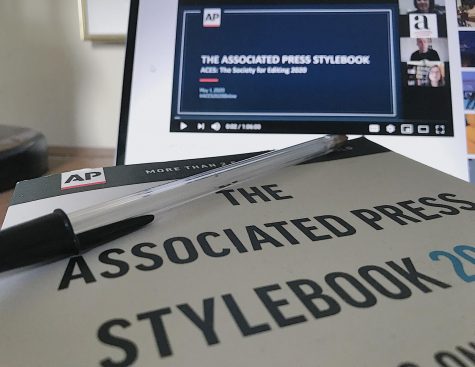A “Report on the Experience”: Wiseman Discusses New Documentary
October 24, 2018
By Ryan Di Corpo
“I’m not looking for something, I’m looking for what I find,” said Frederick Wiseman in describing his approach to filmmaking.
A well-heeled documentarian, Wiseman has made over 40 films since 1967. His subjects are varied and unobvious: a hospital for the criminally insane, a Philadelphia public high school, the Idaho state legislature, the Metropolitan Hospital Center, the Crazy Horse cabaret and the New York Public Library, to name a few.
Now, at 88, Wiseman has turned his camera to the goings-on of Monrovia, Indiana — a 1.77 square mile town with 288 families, according to the 2010 Census.
His film takes the viewer into a veterinary clinic, various town council meetings, a funeral service and a high school English class in which Monrovia’s august place in basketball history — the teacher relates — is the topic du jour.
Monrovia, Indiana, which opens at Lower Manhattan’s Film Forum this Friday, is not a film that urges explanation — something Wiseman discourages.
Explanation itself continually plagues Wiseman. He is explained as a progenitor of American observational cinema or cinéma vérité, both descriptions that Wiseman eschews for his work. For his decidedly non-stylized shooting of the everyday, he has been explained as a fly-on-the-wall, which insults Wiseman’s consciousness as a filmmaker.
During a Sept. 30 Q&A session following a screening of Monrovia at the 56th New York Film Festival, an audience member asked Wiseman to explain the themes of his film — which Wiseman both did and did not do.
Wiseman’s films, in their smartly crafted presentation of consistently fascinating, often challenging and at times wryly humorous happenings, defy easy definition. For these efforts, Wiseman has earned his share of praise and accolades.
A four-time Emmy Award-winner, he was presented with an Honorary Academy Award in 2016 and the Golden Lion for Lifetime Achievement at the 71st Venice International Film Festival in 2014. His films High School (1968) and Hospital (1970) have entered the National Film Registry for being “culturally, historically, or aesthetically significant.”
Wiseman has been described by The National Academy of Television Arts and Sciences as “one of the most accomplished documentarians in the history of the medium.”
At the Film Forum, Wiseman sat down with The Fordham Ram to discuss his exacting process and filmmaking philosophy.
“I wanted to do a movie about a small town in the Midwest, and I told that to a friend of mine who’s a law professor in Boston,” said Wiseman.
“She told me she had a friend who taught at Indiana (University Maurer School of Law), which is in Bloomington. And so, by chance, I was supposed to show some movies in Bloomington a couple of weeks later. So I called this guy up and told him what I wanted to do. And he said, ‘Come in a day early. I’ll take you to my hometown where my family’s lived for six generations.'”
The hometown was Monrovia, a place both welcoming in its sense of community and insular in its focus.
“And then I started shooting a couple of months later. … And everybody was extremely cooperative.”
As evidenced by In Jackson Heights (2015) and Belfast, Maine (1999), Monrovia is not the first time Wiseman has made a specific community his subject. Yet, he is never sure what he will find in each new community, nor does he have a clear concept of what the final film will look like.
“It’s a roll of the dice,” said Wiseman. “And I’m gambling that over whatever period of time I’m there I’ll accumulate enough footage out of which I can cut a movie.”
Based on his filmography, Wiseman may be one of the luckiest gamblers of his generation. Yet his films are not constructed by chance, but rather through a taxing editing process.
“When I come back from the shoot, I look at the rushes, and that takes me six or eight weeks,” said Wiseman. “And at the end of that time, I put aside about 50 percent of the material. And then I begin to work on the other 50 percent and edit sequences that I think are going to be used in the film.”
Editing his footage is no small feat, as Wiseman routinely shoots around 150 hours of film. “The basic thing is to sit in the chair and not tear what’s left of your hair out,” said Wiseman.
For At Berkeley (2013), Wiseman shot approximately 250 hours of footage that he edited into an over four-hour long film.
For Monrovia, Wiseman shot about 120 hours. The process of editing the selected 50 percent of material takes him between six to eight months.
“I’m not thinking about structure at all, or narrative, which is synonymous with structure to me,” said Wiseman. “And it’s only when I’ve edited all the sequences I think I might use that I begin to work on the structure. And then I do the first assembly very quickly in three or four days after that, because everything is in close to final form.”
According to Wiseman, the final film tends to run 30 to 40 minutes longer than the final cut.
“When I think the film is finished, I go back and look at all 120 hours of the rushes again, and I always find material that I had discarded that helps me better resolve a problem …,” he said.
Wiseman refers to the urge to continue editing ad nauseam as “a trap.”
“You have to make up your mind that you’ve done the best you can with the material, and maybe physical or mental exhaustion,” said Wiseman.
Like many of his works, Monrovia flirts with politics without endorsing or condemning a specific viewpoint. Wiseman takes the viewer into the town gun shop, revealing the conservatism and gun culture of Monrovia (a poster reads: “I’m all for gun control. I use both hands.”) without providing direct commentary or criticism.
“I think there are politics implicit in Monrovia, but perhaps more indirectly stated,” said Wiseman.
As a filmmaker, Wiseman is not driven by a particular message. Writing for Film Comment, Nicolas Rapold said, “It is in fact a hallmark of Wiseman’s open-text films that multiple meanings apply.” Wiseman seems to concur.
“I’m not setting out to prove a thesis or ideological point-of-view. I’m looking for an experience, and the final film is, in a sense, my report on the experience,” he said.
This reportage, while not immune to bias, rejects what Wiseman terms “preaching to the converted” — that is, moving an audience to assume the ideology of the director.
“I don’t like didacticism in any form,” said Wiseman.
Instead, he hopes to “begin to even suggest the complexity” of events, which creates a more “stimulating” product.
Monrovia succeeds in this regard, unfolding as an engrossing document on a largely-unknown community while also functioning as a meditation on life and death, two of Wiseman’s continued concerns.









If you want a picture to show with your comment, go get a gravatar.